How to Develop Your Drawing and Painting Style
Developing your own unique drawing and painting style is like embarking on an exciting journey, one that combines self-discovery, experimentation, and creativity. It’s not just about putting brush to canvas or pencil to paper; it’s about expressing who you are as an artist. Think of your artistic style as your fingerprint—no two are the same, and it evolves over time as you grow and learn. So, how do you cultivate this unique style? In this article, we’ll explore various methods and techniques that can help you enhance your creativity and personal expression through practice and exploration.
To start, let’s dive into the concept of artistic identity. Understanding who you are as an artist is crucial. This means reflecting on your personal experiences, influences, and the emotions you wish to convey through your art. Are you drawn to vibrant colors that evoke joy, or do you prefer muted tones that communicate introspection? Your artistic identity is shaped by your background, culture, and the world around you. By embracing your uniqueness, you can create art that resonates not only with you but also with others. Remember, every artist has a story to tell—what’s yours?
Another exciting way to develop your style is by experimenting with various mediums. Each medium—be it oil paints, acrylics, watercolors, or digital tools—offers a different way to express your ideas and emotions. By trying out different materials and techniques, you can discover what resonates with you the most. For instance, you might find that the fluidity of watercolors allows for a more spontaneous expression, while the richness of oil paints helps you achieve depth and detail. The key here is to embrace the process of exploration. Don’t be afraid to make mistakes; they often lead to unexpected discoveries!
The debate between traditional and digital art is as old as time, and each medium presents unique opportunities for developing your individual style. Traditional art forms, such as painting with oils or sketching with charcoal, offer a tactile experience that many artists cherish. The physical connection to the materials can deepen your understanding of techniques and enhance your personal expression. On the other hand, digital art opens up a world of flexibility and innovative tools that can elevate your creativity to new heights. You can easily experiment with colors, layers, and effects without the limitations of physical materials. Ultimately, the choice between traditional and digital art comes down to personal preference and the kind of experience you seek as an artist.
Traditional art forms provide invaluable benefits that can enrich your style:
- Tactile Experience: The physical engagement with materials can inspire creativity.
- Connection to Techniques: Mastering traditional techniques can enhance your overall skill set.
- Unique Textures: Each medium offers distinct textures that can influence your artistic voice.
Conversely, digital art offers its own set of advantages:
- Flexibility: Easily undo mistakes and experiment without fear.
- Innovative Tools: Use software that provides endless possibilities for creativity.
- Accessibility: Share your work instantly with a global audience.
Inspiration is the lifeblood of artistic growth. It can come from various sources, and it’s essential to seek out what ignites your creativity. Nature, culture, and art history are just a few wellsprings of inspiration. Take a stroll in a park, visit a museum, or immerse yourself in a different culture—each experience can provide fresh ideas and perspectives. Keep a sketchbook handy to jot down thoughts, doodles, or color palettes that catch your eye. Remember, inspiration is everywhere; you just have to be open to it!
Finally, establishing a consistent practice is vital for improvement. Just like any other skill, drawing and painting require regular attention and dedication. Create a routine that allows you to practice regularly, whether it’s daily or a few times a week. Consistency not only helps refine your techniques but also encourages the evolution of your style. Set aside time in your schedule to experiment, create, and reflect.
Setting achievable goals can act as a guiding light in your artistic journey. Think about what you want to accomplish in your practice. These goals should be specific and measurable. For example, you might aim to complete one painting a week or explore a new medium every month. By having clear objectives, you can track your progress and celebrate your achievements, no matter how small.
Regularly reflecting on your artistic progress is crucial for development. Take time to assess your work and identify areas for improvement. This can be done through self-assessment or seeking feedback from fellow artists. Constructive criticism can provide valuable insights that help refine your style. Remember, every artist evolves, and reflection is key to ensuring that growth continues.
Q: How long does it take to develop a unique style?
A: Developing a unique style is a personal journey that varies for each artist. It can take months or even years of practice and exploration.
Q: Should I focus on one medium or experiment with many?
A: It’s beneficial to experiment with various mediums initially. This exploration can help you find what resonates most with you.
Q: How can I find inspiration when I'm feeling stuck?
A: Try stepping outside, visiting galleries, or engaging with other artists. Sometimes, a change of scenery can spark new ideas!
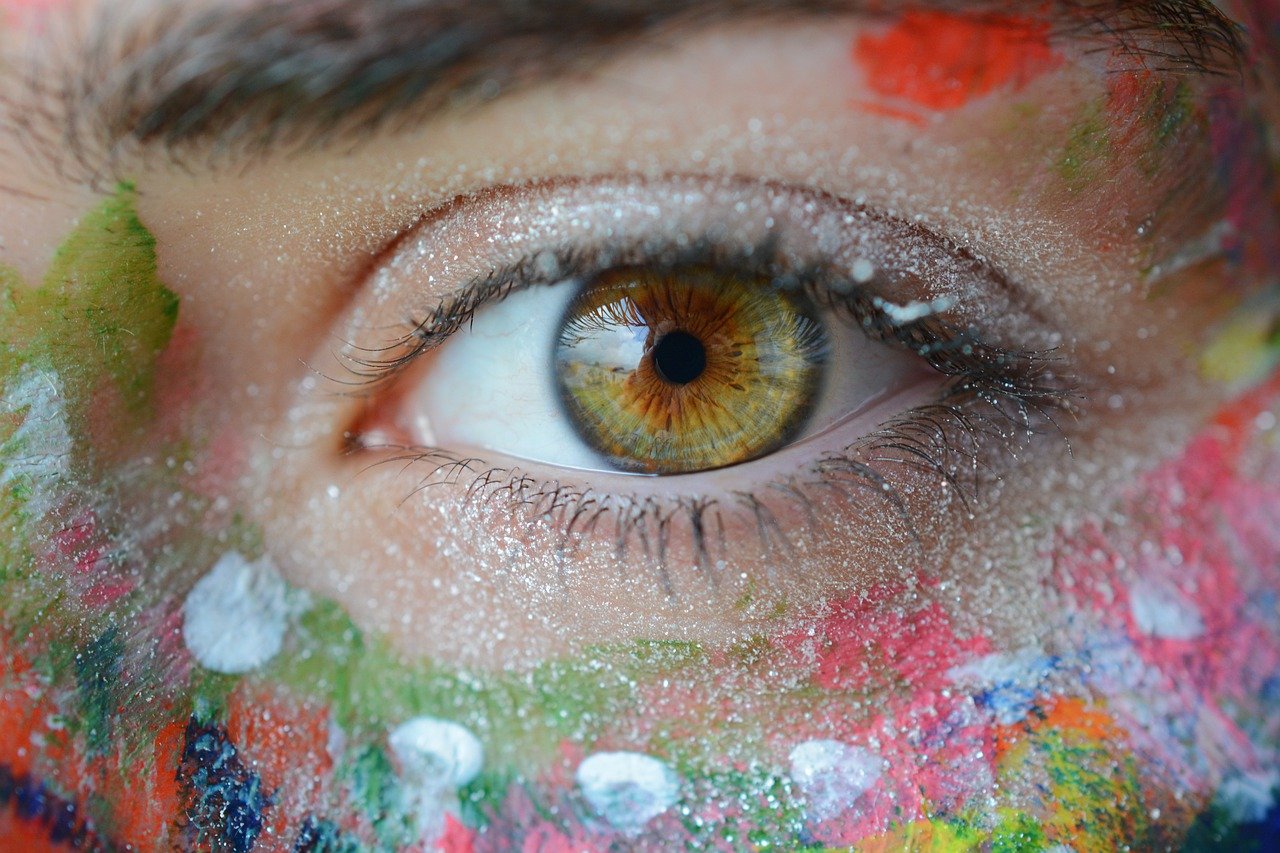
Understanding Artistic Identity
Exploring the concept of artistic identity is crucial for artists who wish to carve out their unique niche in the vast world of creativity. Just like a fingerprint, each artist has a distinctive style shaped by a myriad of factors, including personal experiences, cultural background, and emotional influences. It's fascinating to think about how your journey as an artist is not just about the strokes you make on a canvas or the colors you choose; it’s about who you are and how you express that identity through your art.
Self-awareness plays a pivotal role in developing your artistic identity. When you take the time to reflect on your experiences, preferences, and even your struggles, you begin to understand what truly resonates with you. Ask yourself questions like, “What themes am I drawn to?” or “What emotions do I want to convey?” This journey of self-discovery is akin to peeling back the layers of an onion; each layer reveals a little more about your core identity.
Your personal experiences can also significantly influence your artistic style. For instance, if you grew up in a vibrant cultural environment, you might find that your art incorporates bold colors and dynamic forms that reflect that energy. On the other hand, someone who has faced challenges may express their feelings through darker tones and more abstract forms. This diversity in backgrounds not only enriches your work but also connects you to a broader audience who may relate to your story.
Moreover, your artistic identity is not static; it evolves over time. Think of it as a river that flows and changes course based on the landscape around it. The more you explore different styles, techniques, and mediums, the more you will discover facets of your identity that you may not have known existed. Embrace this evolution and allow your art to grow with you!
To further understand your artistic identity, consider creating a vision board or a mood board. This visual representation can include images, colors, and words that resonate with you. It’s a fantastic way to see the common threads that run through your work and can serve as a source of inspiration when you feel lost. Here’s a simple way to create your board:
- Gather materials: magazines, printouts, or even digital images.
- Cut out or save images and words that inspire you.
- Arrange them on a board or a digital platform.
- Reflect on the themes that emerge.
In conclusion, understanding your artistic identity is a journey worth taking. It requires introspection, exploration, and a willingness to adapt. As you delve deeper into your identity, you'll find that your art becomes a more authentic reflection of who you are. So, embrace your uniqueness, and let it shine through your work!
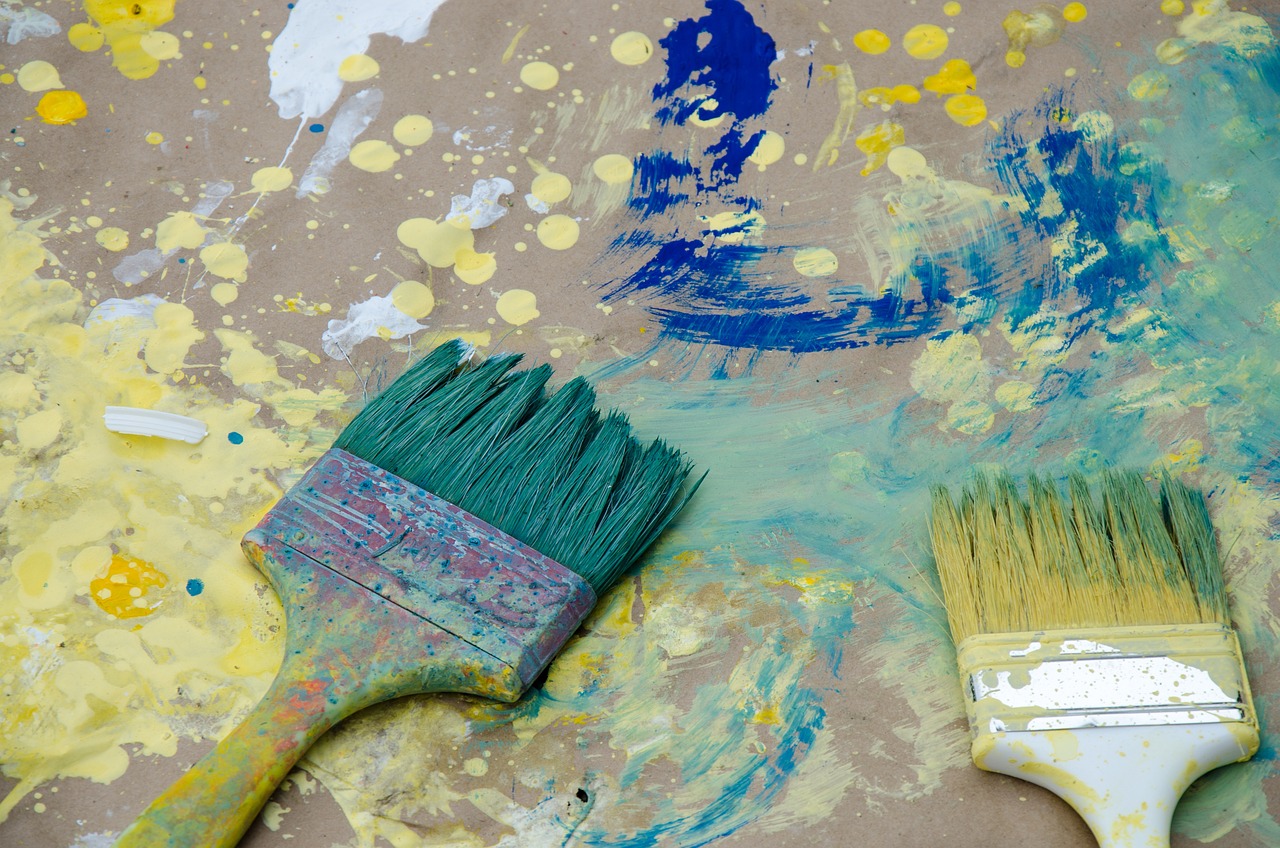
Experimenting with Different Mediums
When it comes to developing your drawing and painting style, one of the most exciting avenues to explore is . Each medium you try can open up a world of possibilities, allowing you to express your creativity in ways you may never have imagined. Think of it like being a chef in a kitchen filled with various ingredients—each one has its unique flavor and texture, and when combined thoughtfully, they can create a masterpiece. So, let’s dive into how experimenting with different materials can significantly influence your artistic style.
First off, let’s talk about the benefits of exploring various mediums. When you step out of your comfort zone and try something new, you not only challenge yourself but also discover new techniques and styles that can enrich your artwork. For instance, if you usually work with graphite pencils, trying out charcoal can introduce you to a whole new range of tones and textures. Similarly, if you’re primarily a watercolor artist, dabbling in acrylics might surprise you with their vibrancy and versatility. This blending of mediums can lead to a unique style that is distinctly yours.
Moreover, experimenting with different mediums can help you develop your artistic voice. Just like a musician finds their sound by playing various instruments, an artist can hone their style by mixing and matching different materials. For example, consider the following mediums:
| Medium | Characteristics | Potential Impact on Style |
|---|---|---|
| Graphite | Precision, detail-oriented | Enhances drawing skills, focus on detail |
| Charcoal | Bold, expressive strokes | Encourages spontaneity and depth |
| Watercolor | Fluid, translucent layers | Promotes a soft, ethereal quality |
| Acrylic | Vibrant, quick-drying | Allows for bold experimentation and layering |
| Digital | Endless possibilities, easy to edit | Encourages innovative techniques and styles |
As you can see, each medium has its own unique characteristics that can lead to a different artistic outcome. But here’s the kicker: the more mediums you try, the more you’ll find your personal style evolving. It’s like adding spices to a dish; a little bit of this and a pinch of that can transform something ordinary into something extraordinary. So don’t be afraid to mix it up!
Now, let’s touch on the ongoing debate between traditional and digital art. Each has its own merits and can dramatically shape your style. Traditional art forms, like painting and drawing, offer a tactile experience that many artists cherish. The feel of the brush on canvas, the texture of the paper—these elements can create a deep connection to your work. On the other hand, digital art provides unmatched flexibility and an array of innovative tools that can enhance your creativity. It’s like comparing a classic novel to a thrilling new graphic novel; both tell stories but in vastly different ways.
Ultimately, the key is to embrace variety. Allow yourself the freedom to explore and play with different mediums. Whether you're layering watercolors, sketching with charcoal, or creating vibrant digital compositions, every experience adds to your artistic toolkit. Remember, art is not just about the final product; it’s about the journey and the discoveries you make along the way. So grab those brushes, pencils, or styluses, and start experimenting! You never know what magic you might create.
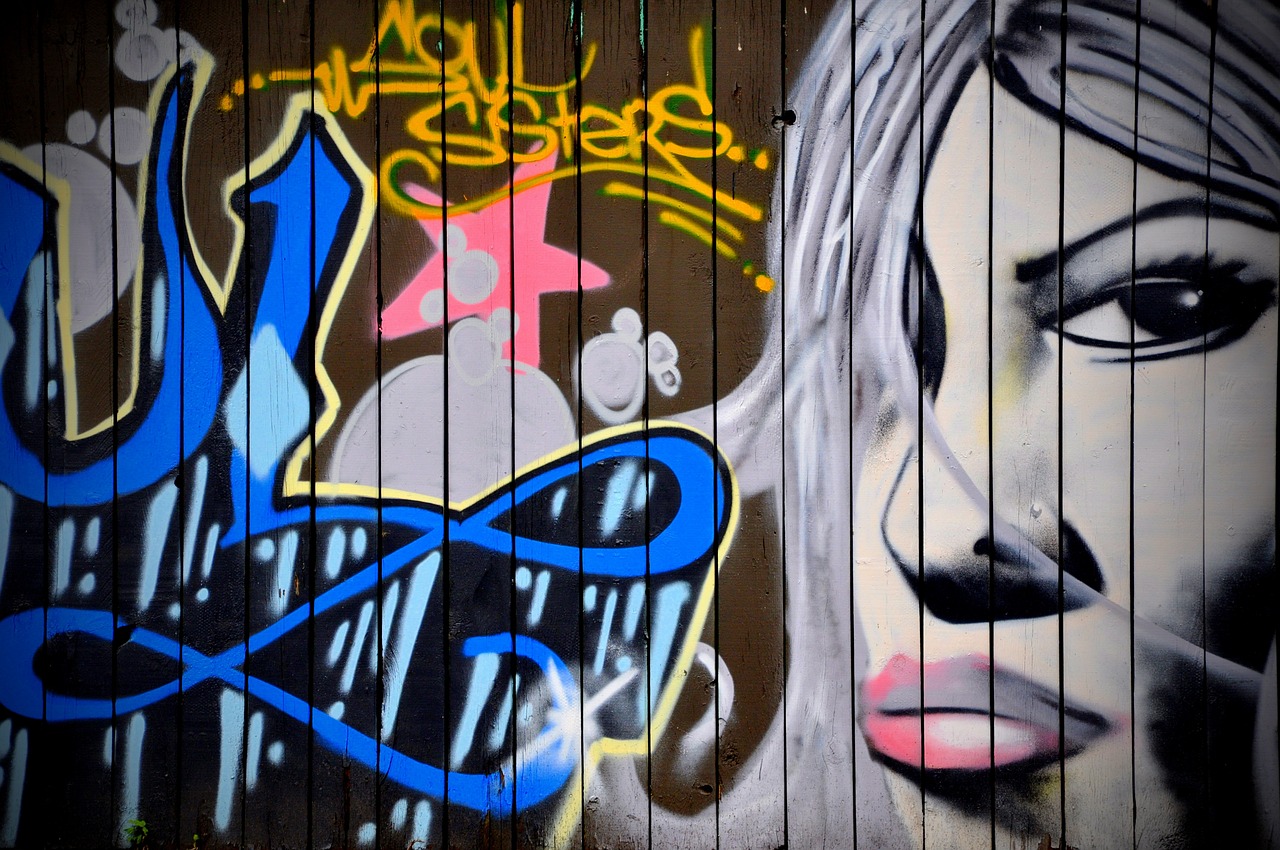
Traditional vs. Digital Art
When diving into the world of art, one of the most intriguing debates that often arises is the clash between traditional and digital art. Each medium brings its own flavor to the table, shaping how artists express their creativity and develop their unique styles. So, what’s the real difference, and how does each medium influence an artist's journey? Let's break it down!
Traditional art encompasses a variety of techniques and materials, including pencil, charcoal, oil paint, watercolor, and pastels. These tangible mediums allow artists to engage with their work on a physical level. Imagine the feeling of a brush gliding across canvas or the sound of a pencil scratching against paper—there’s something magical about it! This tactile experience not only enhances the connection to the artwork but also encourages experimentation with textures and layering techniques. Artists often find that these hands-on materials can lead to unexpected results, which in turn helps to shape their individual style.
On the flip side, digital art has revolutionized the way artists create. With tools like graphic tablets and software such as Adobe Photoshop and Procreate, artists can explore endless possibilities without the constraints of traditional mediums. The flexibility of digital platforms allows for easy adjustments, instant undo options, and the ability to work in layers, which can be a game-changer for refining one’s style. For example, if an artist doesn’t like a color choice, they can simply change it with a click rather than starting over entirely. This freedom can lead to a more experimental approach, fostering innovation and unique artistic expressions.
However, both mediums have their own sets of advantages and challenges. Here’s a quick comparison:
| Aspect | Traditional Art | Digital Art |
|---|---|---|
| Tactile Experience | Yes, hands-on materials | No, relies on digital tools |
| Flexibility | Limited, requires more effort to change | High, easy to modify |
| Learning Curve | Varies by medium, often requires practice | Can be steep, depending on software |
| Cost | Materials can be expensive | Initial investment in software/hardware |
Ultimately, the choice between traditional and digital art often comes down to personal preference and the specific goals an artist has in mind. Some artists even choose to blend both mediums, creating a hybrid style that showcases the best of both worlds. This fusion not only enriches their artistic identity but also opens up new avenues for creativity.
So, which path should you take? It’s all about exploration! Try your hand at both traditional and digital methods, and don’t be afraid to mix and match. After all, the journey of discovering your unique artistic style is as exciting as the final masterpiece itself!
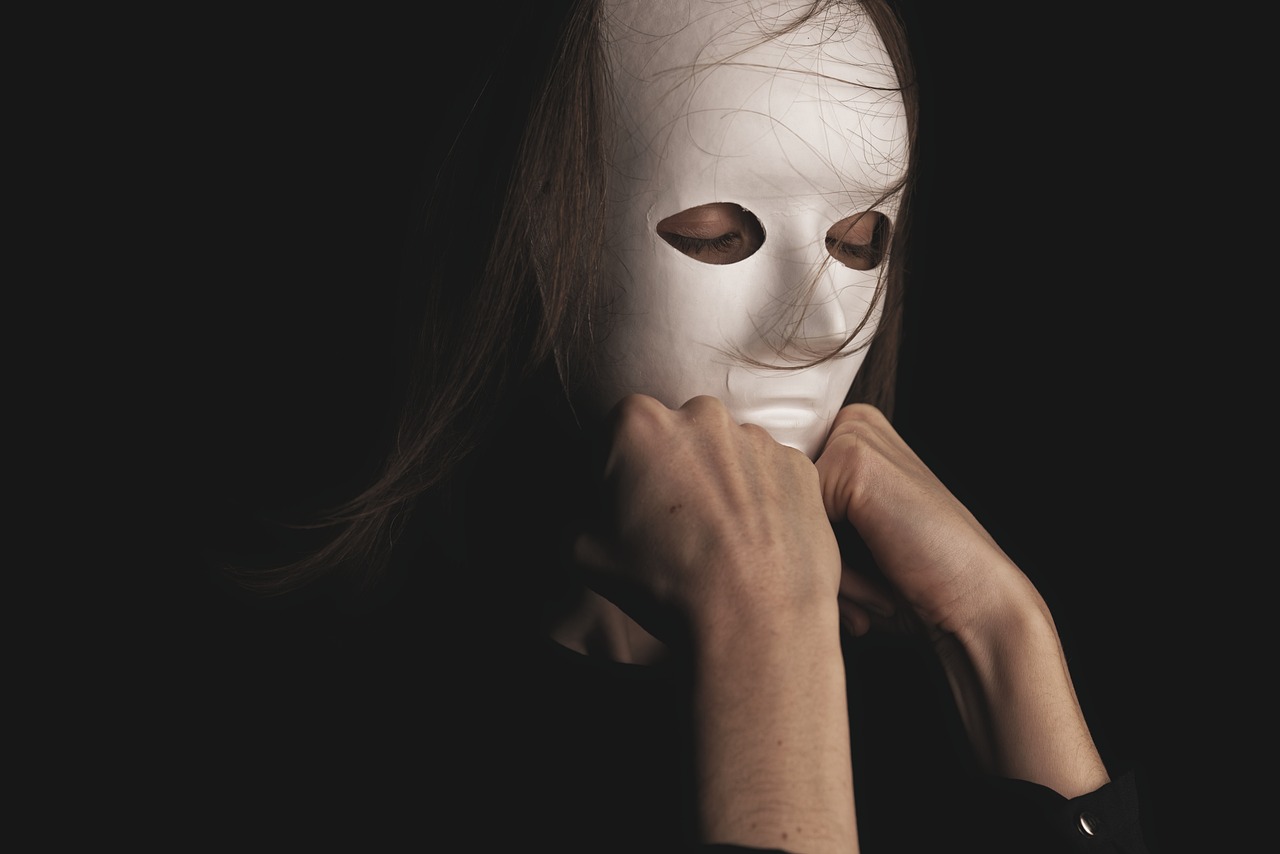
Benefits of Traditional Art
Traditional art forms, such as painting with oils or sketching with charcoal, offer a myriad of benefits that can deeply enrich an artist's style and personal expression. One of the most significant advantages is the tactile experience associated with handling physical materials. The sensation of brush against canvas or pencil on paper creates a connection that is often missing in digital mediums. This physical interaction can lead to a more profound understanding of the medium itself, allowing artists to develop techniques that are unique to their touch and style.
Moreover, traditional art encourages a sense of patience and mindfulness. Unlike the instant gratification often found in digital art, working with traditional materials requires time and dedication. Artists must invest hours into layering paints, perfecting strokes, or waiting for mediums to dry. This process fosters a deeper appreciation for the journey of creation, allowing artists to connect emotionally with their work. It's akin to nurturing a plant; with each brushstroke, you watch your creation grow and evolve over time.
Another compelling benefit of traditional art is the exploration of techniques. Artists can experiment with various methods, such as glazing, impasto, or chiaroscuro, which can significantly influence their style. For instance, using a palette knife in oil painting can create textures that are difficult to replicate digitally. By mastering these techniques, artists can develop a signature style that reflects their personality and vision. The physicality of traditional art also allows for spontaneous creativity, where accidents can lead to unexpected and delightful results.
Additionally, traditional art provides a unique opportunity for community engagement. Many artists find inspiration and motivation through workshops, art classes, and local art shows. This sense of community can be incredibly beneficial, as it allows artists to share their experiences, receive constructive feedback, and collaborate with others. Engaging with fellow artists can spark new ideas, pushing one’s creative boundaries and encouraging the exploration of different styles.
Lastly, the permanence and historical significance of traditional art cannot be overlooked. Traditional artworks often carry a weight of history and cultural significance that can resonate with both the artist and the audience. The ability to create something tangible that can be passed down through generations adds a layer of meaning to the work. It’s like creating a time capsule, where each brushstroke tells a story that transcends time, allowing future generations to connect with the artist’s vision.
In summary, traditional art forms offer a wealth of benefits that can profoundly impact an artist's development. From the tactile experience to the exploration of techniques and community engagement, these elements contribute to a rich artistic journey. Embracing traditional methods can lead to a unique and personal artistic style that reflects the artist's identity and experiences.
- What materials are essential for traditional art? Common materials include pencils, charcoal, paint (oils, acrylics, watercolors), brushes, and canvases.
- How can I improve my traditional art skills? Regular practice, attending workshops, and seeking feedback from peers can greatly enhance your skills.
- Is traditional art better than digital art? It depends on personal preference. Traditional art offers a tactile experience, while digital art provides flexibility and innovative tools.
- Can I combine traditional and digital art? Absolutely! Many artists blend both mediums to enhance their creativity and style.

Advantages of Digital Art
In the ever-evolving world of art, digital art has emerged as a powerful medium that offers a plethora of benefits for artists. One of the most significant advantages is the flexibility it provides. Unlike traditional mediums, which can be limited by the materials at hand, digital platforms allow artists to experiment without the fear of wasting resources. Imagine having an endless canvas where you can try out different colors, styles, and techniques—all at the click of a button! This freedom fosters creativity and encourages artists to step out of their comfort zones.
Another remarkable aspect of digital art is the access to a wide array of innovative tools and features. Programs like Adobe Photoshop, Procreate, and Corel Painter come equipped with brushes, textures, and filters that can replicate traditional mediums or create entirely new effects. Artists can easily adjust their work with layers, undo mistakes, and even experiment with 3D elements. This level of control and adaptability can significantly enhance an artist's ability to develop a unique style that reflects their personal vision.
Furthermore, digital art enables a faster workflow. The ability to copy, paste, and manipulate elements can save precious time, allowing artists to focus more on the creative process rather than the technicalities of their medium. For instance, an artist can create multiple iterations of a single piece in a fraction of the time it would take with traditional methods. This efficiency not only boosts productivity but also encourages artists to produce more work, leading to a broader exploration of their artistic identity.
Moreover, digital platforms foster a sense of community and collaboration. With the rise of social media and online forums, artists can easily share their work, receive feedback, and connect with others in the art world. This interaction can be incredibly inspiring and can introduce artists to new ideas and techniques that they may not have considered otherwise. The digital art community is vibrant and diverse, offering a wealth of resources, tutorials, and support that can help artists refine their unique styles.
Lastly, let's not overlook the environmental aspect. Digital art reduces the need for physical materials, which means less waste. Artists can create stunning works without consuming paper, paint, or canvas. This eco-friendly approach is becoming increasingly important in today's world, where sustainability is a growing concern. By choosing digital art, artists can contribute to a greener planet while still expressing their creativity.
In conclusion, the advantages of digital art are numerous and impactful. From flexibility and innovative tools to faster workflows and a supportive community, digital platforms provide artists with the resources they need to cultivate their unique styles. Whether you're a seasoned professional or a budding artist, embracing digital art can open up a world of possibilities and help you express your artistic vision like never before.
- What are the best software options for beginners in digital art? Popular choices include Procreate, Adobe Fresco, and Krita, which offer user-friendly interfaces and a variety of tools.
- Do I need a tablet to create digital art? While a tablet can enhance the experience, you can also create digital art using a computer and a mouse.
- How can I find my unique style in digital art? Experiment with different techniques and subjects, and don’t be afraid to mix styles until you find what resonates with you.
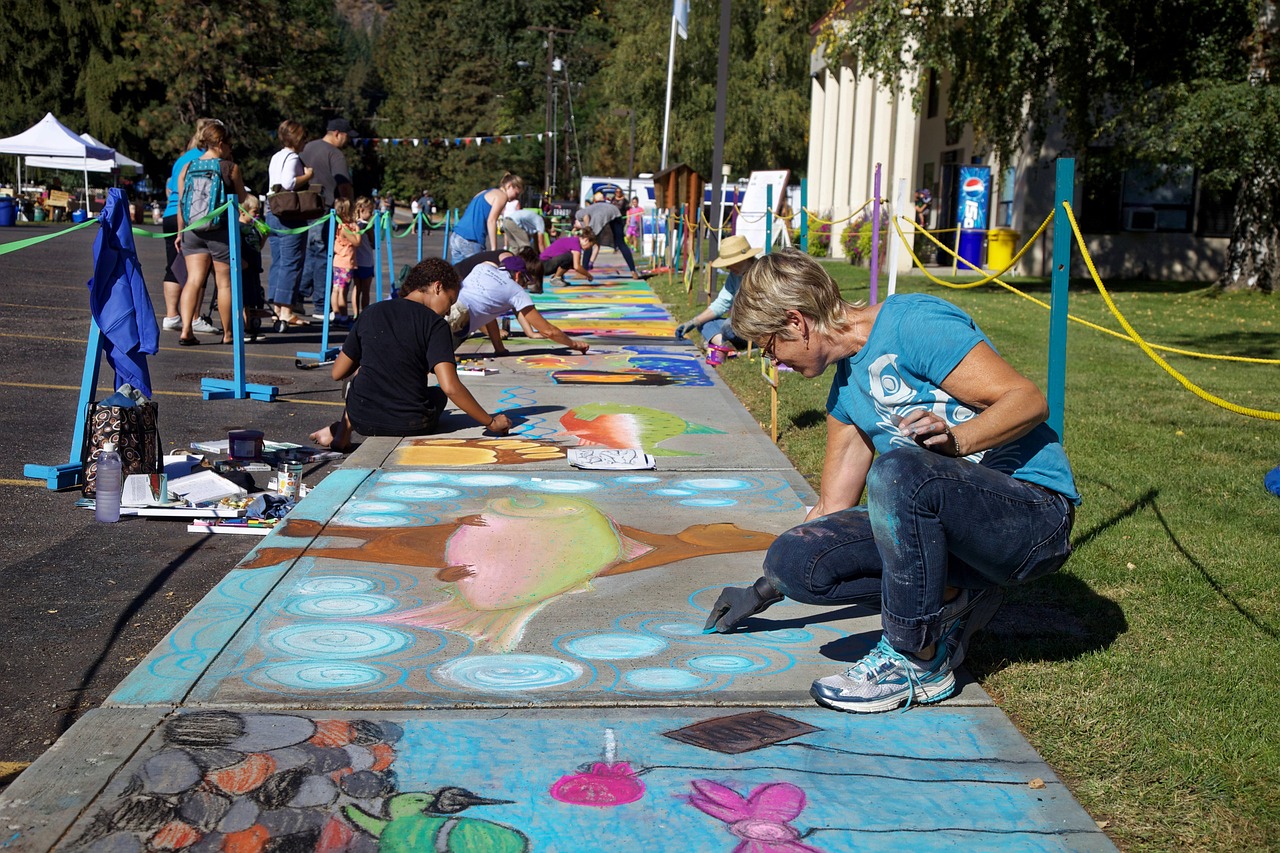
Finding Inspiration
Finding inspiration is like searching for hidden treasures in a vast ocean; sometimes it’s right beneath the surface, and other times, it requires diving deep into uncharted waters. For artists, inspiration is the spark that ignites creativity, driving them to express their unique perspectives through drawing and painting. It’s essential to explore various sources of inspiration to cultivate a rich and diverse artistic style. Think about the world around you—nature, culture, and even your personal experiences can serve as profound wellsprings of creativity.
One of the most accessible sources of inspiration is nature. The vibrant colors of a sunset, the intricate patterns of leaves, or the serene beauty of a flowing river can all inspire stunning artwork. Taking a walk in a park or hiking in the mountains can open your eyes to the beauty that surrounds you and help you see the world from a different angle. Nature not only provides a visual feast but also instills a sense of peace and tranquility that can enhance your artistic expression.
Cultural influences are another powerful source of inspiration. Every culture has its own unique stories, symbols, and art forms that can resonate deeply with an artist. By exploring different cultures, whether through travel, literature, or music, you can infuse your work with rich narratives and diverse aesthetics. For instance, the bold colors and patterns of African textiles or the delicate brushwork of Japanese ink paintings can inspire new techniques and styles in your own art.
Art history is also an invaluable resource for inspiration. Studying the works of renowned artists can provide insights into various techniques and styles. You might find yourself drawn to the emotive brushstrokes of Van Gogh or the meticulous detail of Renaissance painters. Understanding the context in which these artists created their work can also spark ideas for your own artistic journey. Consider creating a mood board or a digital collection of artworks that resonate with you; this can serve as a visual reference and a source of motivation during your creative process.
Additionally, engaging with other artists can be incredibly inspiring. Whether through social media platforms, art communities, or local workshops, connecting with fellow creatives allows for the exchange of ideas, techniques, and experiences. You might discover new methods or perspectives that can significantly influence your style. Joining an art class or participating in collaborative projects can also push you out of your comfort zone, encouraging you to try new things and explore uncharted territories in your work.
Inspiration can also come from within. Reflecting on your own experiences, emotions, and thoughts can lead to profound artistic expression. Consider keeping a journal where you jot down your feelings, dreams, or even random thoughts. This practice not only helps in self-discovery but can also serve as a wellspring of ideas for your artwork. Remember, every artist has a unique voice; embracing your individuality will allow you to create pieces that are genuinely reflective of who you are.
Ultimately, finding inspiration is about staying open and curious. Embrace the world around you, explore new ideas, and don’t be afraid to step outside of your comfort zone. Your artistic journey is uniquely yours, and the more you seek out inspiration, the richer and more diverse your style will become. So go ahead, dive deep into the ocean of creativity, and let the waves of inspiration carry you to new artistic horizons!
- How can I find inspiration for my art?
Inspiration can be found in nature, culture, art history, and personal experiences. Exploring these areas can help you discover new ideas and perspectives for your artwork.
- Is it important to study other artists?
Yes, studying other artists can provide valuable insights into techniques, styles, and the creative process. It can also inspire you to develop your unique artistic voice.
- How can I stay motivated to create art?
Setting achievable goals, maintaining a consistent practice, and engaging with other artists can help keep you motivated. Additionally, reflecting on your progress can provide encouragement and direction.
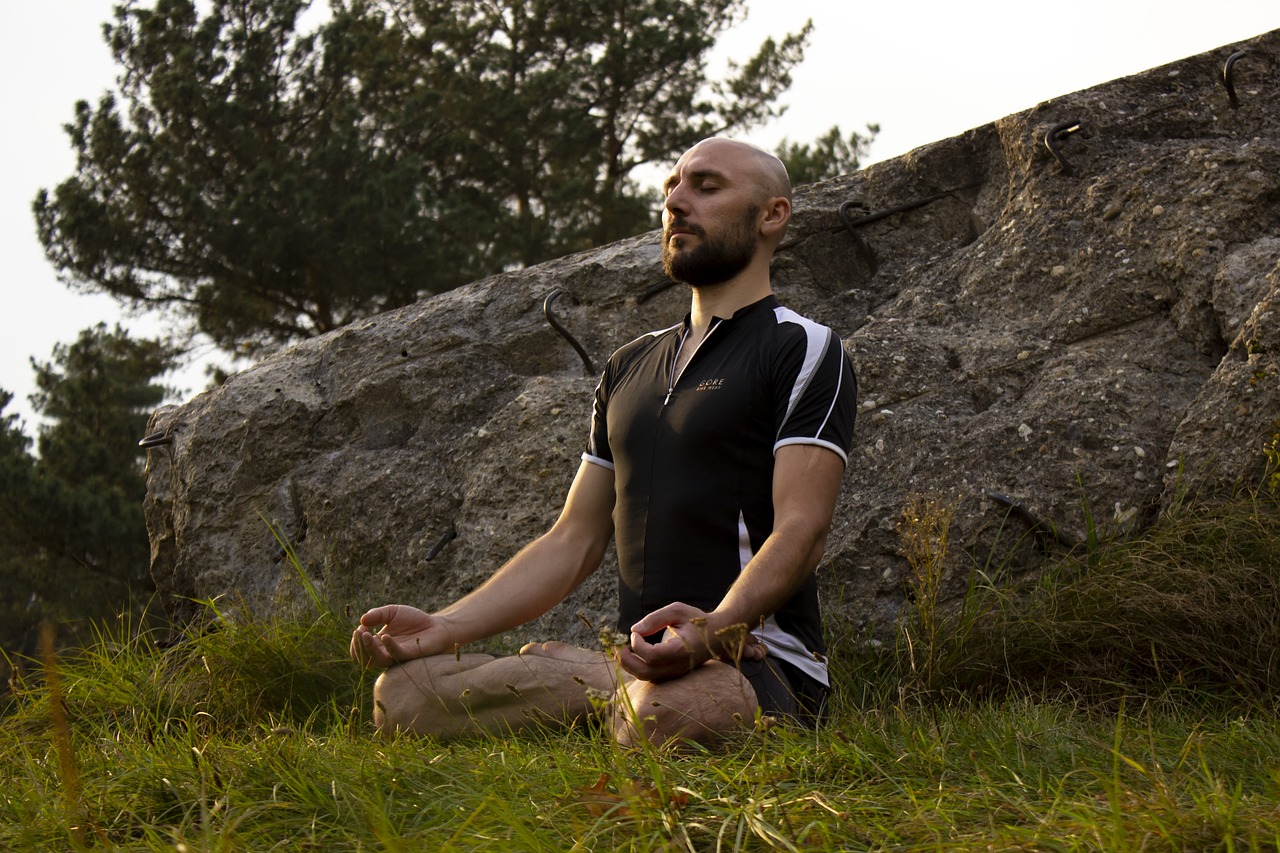
Developing a Consistent Practice
Establishing a consistent practice is like nurturing a garden; it requires time, dedication, and the right conditions to flourish. For artists, finding a rhythm in their drawing and painting endeavors can significantly enhance their skills and help them develop a unique style. Just as a musician practices scales to perfect their craft, artists must engage in regular practice to refine their techniques and explore their creative boundaries. But how do you create a routine that not only fosters improvement but also keeps the spark of creativity alive? Let’s dive into some practical strategies.
First and foremost, it’s essential to set aside dedicated time for your art. Whether it's an hour a day or a few hours a week, consistency is key. Think of this time as a sacred appointment with yourself. By treating your art practice with respect and seriousness, you send a clear message to your brain that this is important. You might even want to create a cozy, inspiring space that’s just for your artistic pursuits—like a small studio corner filled with your favorite supplies. This space can become a sanctuary where your creativity can flow freely.
Next, consider setting specific goals for your practice. Goals can serve as a roadmap for your artistic journey, helping you stay focused and motivated. Instead of vague aspirations like "I want to get better at painting," try something more concrete, such as "I will complete three landscape paintings this month" or "I will experiment with watercolor techniques every Saturday." By breaking down your larger objectives into manageable tasks, you can track your progress and celebrate small victories along the way.
Additionally, it’s beneficial to reflect on your progress regularly. Just like a gardener assesses the growth of their plants, artists should take time to evaluate their work. This could mean keeping a sketchbook where you jot down thoughts about what you learned from each piece or what techniques you enjoyed experimenting with. You might also want to seek feedback from fellow artists or mentors. Constructive criticism can provide valuable insights and help you refine your style even further.
To keep your practice fresh and exciting, don’t hesitate to mix things up. Try new subjects, techniques, or even different art forms altogether. If you usually paint landscapes, why not give portrait drawing a shot? This exploration can lead to unexpected discoveries about your artistic voice. Remember, creativity thrives on variety, so allow yourself the freedom to explore without the pressure of perfection.
Lastly, consider joining an art community or group. Being part of a supportive network can significantly enhance your motivation and accountability. You can share your work, participate in challenges, and exchange ideas with others who share your passion. Plus, the sense of camaraderie can be incredibly inspiring and can lead to lasting friendships built on a shared love for art.
- How often should I practice drawing and painting?
It’s best to practice as often as you can, ideally several times a week. Even short sessions can be beneficial! - What if I feel stuck or uninspired?
It’s completely normal to hit a creative block. Try changing your environment, experimenting with new mediums, or taking a break to recharge. - How can I measure my progress?
Keep a journal or sketchbook documenting your work over time. Reflect on what you’ve learned and how your style has evolved.
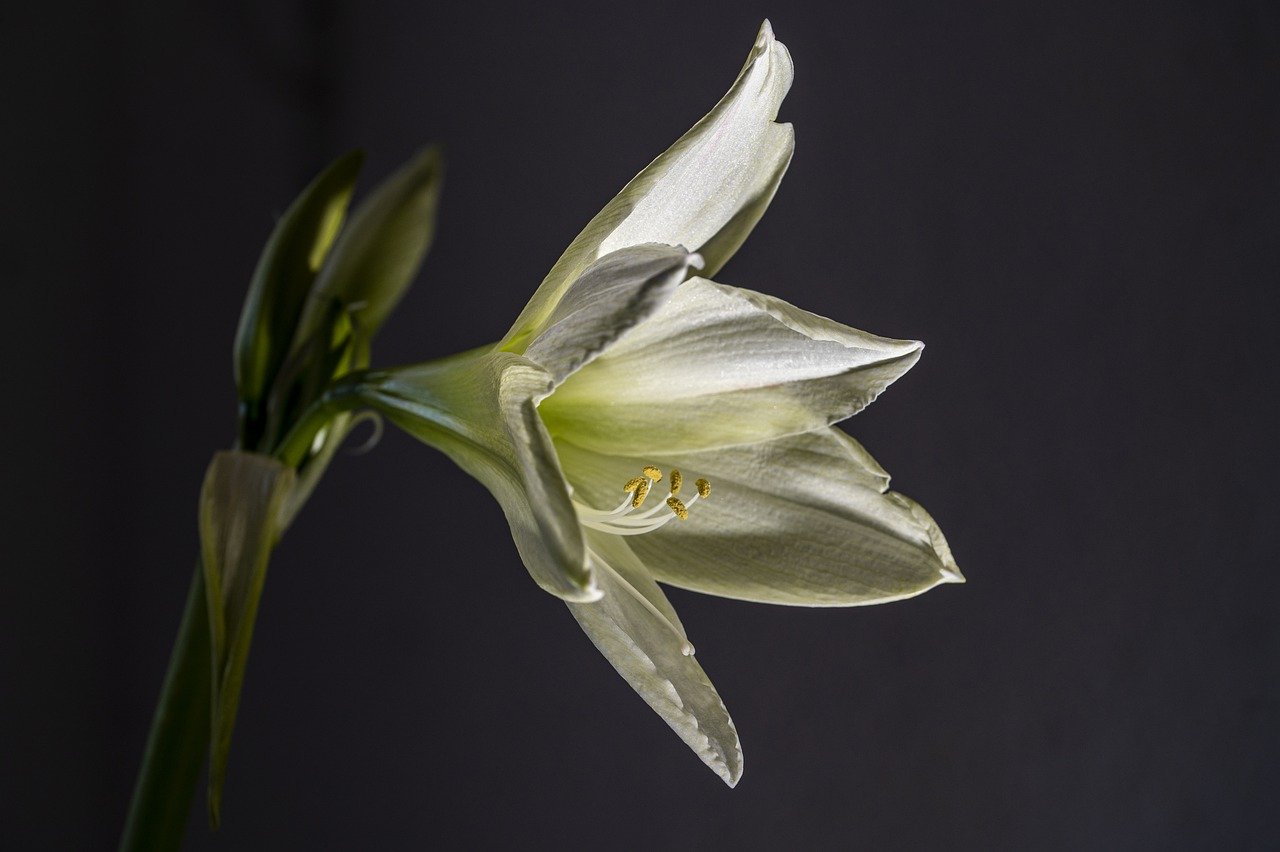
Setting Goals for Improvement
Setting goals is like charting a course on a map; it gives you direction and purpose in your artistic journey. When you embark on the path of developing your unique drawing and painting style, having clear, achievable goals can significantly enhance your growth and creativity. Think of your goals as stepping stones that lead you towards your artistic aspirations. It's not just about where you want to end up, but how you plan to get there!
To begin, consider breaking down your larger artistic ambitions into smaller, manageable objectives. This approach not only makes your goals less daunting but also allows for incremental progress that can be celebrated along the way. For instance, if your ultimate goal is to master portrait painting, you might set specific goals such as:
- Completing one portrait each week.
- Experimenting with different lighting techniques in each piece.
- Studying the works of renowned portrait artists to understand their styles.
Each of these smaller goals serves as a building block towards achieving your larger vision. Additionally, it's vital to make your goals SMART: Specific, Measurable, Achievable, Relevant, and Time-bound. This framework ensures that your goals are not only clear but also realistic and trackable. For example, instead of saying, "I want to get better at painting," you could say, "I will dedicate 30 minutes every day to practice painting landscapes for the next month." This specificity can be incredibly motivating and keeps you accountable.
Moreover, regularly reviewing and adjusting your goals is essential. As you evolve as an artist, your interests and techniques may shift, and that's perfectly okay! Take time every month or so to reflect on what you’ve achieved and what new challenges excite you. This reflective practice can help you stay aligned with your artistic identity and ensure that your goals continue to resonate with your evolving style.
Lastly, don’t forget to celebrate your achievements, no matter how small. Each completed goal is a testament to your hard work and dedication. This positive reinforcement not only boosts your confidence but also encourages you to set even bigger goals as you continue to grow. Remember, the journey of an artist is a marathon, not a sprint, and every step forward is a victory worth acknowledging!
Q: How often should I set new goals for my art practice?
A: It's beneficial to set new goals every few months or as you complete existing ones. Regularly reassessing your goals helps keep your practice fresh and aligned with your evolving artistic vision.
Q: What if I don't meet my goals?
A: Don't be discouraged! Art is a personal journey, and sometimes goals may take longer than expected. Reflect on what you learned during the process and adjust your goals as necessary.
Q: Can I set goals for artistic styles I want to explore?
A: Absolutely! Setting goals to explore different styles can be a great way to expand your artistic range and discover new aspects of your creativity.

Reflecting on Progress
Reflecting on your artistic journey is like looking into a mirror that not only shows your face but also reveals the growth and evolution of your creativity. It’s essential to take a step back and evaluate where you started, where you are now, and where you want to go. This process not only helps in recognizing your achievements but also in identifying areas that need improvement. To truly understand your progression, consider keeping a visual journal where you can document your artworks over time. This journal becomes a treasure trove of insights, allowing you to see patterns in your style and technique.
One effective method of reflection is to set aside time after completing each piece of art to think about what worked and what didn’t. Ask yourself questions such as:
- What techniques did I employ that I enjoyed?
- Were there any challenges I faced that I could learn from?
- How does this piece reflect my current style?
Moreover, seeking feedback from fellow artists or mentors can provide an external perspective that is invaluable. Constructive criticism can illuminate blind spots in your work that you might not have noticed. Consider creating a feedback loop where you regularly share your artwork with others and invite their insights. This can be done through art communities, social media platforms, or local art groups. The key is to remain open to suggestions and to view feedback as a tool for growth rather than a personal critique.
Additionally, you might want to establish a self-assessment framework. This could be as simple as rating your work on a scale of 1 to 10 based on criteria such as technique, emotional impact, and originality. Keeping a table like the one below can help you track your progress over time:
| Date | Artwork Title | Rating (1-10) | Notes |
|---|---|---|---|
| 01/01/2023 | Sunset Over the Lake | 8 | Great use of color blending, but composition could improve. |
| 02/15/2023 | Abstract Dreams | 7 | Interesting concept, but lacked depth in the execution. |
By systematically reflecting on your work, you not only become more aware of your artistic identity but also develop a deeper understanding of your unique style. This practice of reflection is not just about assessing your past; it’s about paving the way for your future creations. Remember, every artist’s journey is a winding road filled with lessons, and each reflection brings you one step closer to discovering your true artistic voice.
Q: How often should I reflect on my progress?
A: It’s beneficial to reflect after completing each piece of art, but setting aside time weekly or monthly for a broader review can provide deeper insights.
Q: What if I don’t like my past work?
A: It’s normal to feel that way! Use those feelings as motivation to learn and grow. Every piece contributes to your journey and helps you evolve.
Q: How can I find people to give me feedback on my art?
A: Join local art groups, online communities, or social media platforms dedicated to artists. Engaging with fellow creatives can lead to valuable feedback.
Frequently Asked Questions
- How can I develop my unique drawing and painting style?
Developing your unique drawing and painting style is all about exploration and self-discovery. Start by experimenting with different mediums, whether traditional or digital. Take time to reflect on your experiences and influences, as they play a significant role in shaping your artistic identity. Consistency is key, so establish a regular practice that allows you to refine your skills and express your individuality.
- What role does artistic identity play in my work?
Your artistic identity is like your fingerprint; it’s what makes your art uniquely yours. It’s shaped by your personal experiences, emotions, and the world around you. By understanding and embracing your identity, you can create art that resonates not just with you, but with others as well. Self-awareness helps in finding your voice and can lead you to develop a distinctive style that stands out.
- Should I focus on traditional art or digital art?
Both traditional and digital art have their own unique advantages. Traditional art offers a hands-on experience and a deep connection to the materials, which can enhance your artistic skills and style. On the other hand, digital art provides innovative tools and flexibility that can spark creativity. It’s worth trying both to see which medium resonates more with you and helps in developing your personal style.
- Where can I find inspiration for my art?
Inspiration can be found everywhere! Nature, culture, art history, and even everyday life can fuel your creativity. Visit galleries, read books, or simply take a walk outside to observe the world around you. Keep a sketchbook handy to jot down ideas or draw what inspires you. The more you expose yourself to different sources, the richer your artistic style will become.
- How can I create a consistent practice for drawing and painting?
Creating a consistent practice involves setting aside dedicated time for your art. Start with a schedule that works for you, whether it’s daily or weekly. Setting specific goals can help you stay focused and motivated. Remember, even short practice sessions can lead to significant improvement over time. The key is to be patient and persistent as you develop your skills and style.
- Why is reflecting on my progress important?
Reflecting on your progress is crucial for growth as an artist. It allows you to assess what techniques work for you and what areas need improvement. Regular self-assessment helps you understand your artistic journey and can provide valuable insights into your style evolution. Don't hesitate to seek feedback from others; it can offer new perspectives and inspire you to push your boundaries.



















